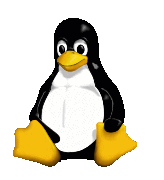|
Size: 3471
Comment:
|
Size: 3649
Comment:
|
| Deletions are marked like this. | Additions are marked like this. |
| Line 32: | Line 32: |
| SL6 is available and fully supported, and it's what we install on any new system except on special request. Users are welcome to have it installed on their desktop, and groups are welcome to have it installed on their WGSs. Migration of farms and WGS has started in autumn 2011. A significant number (~ 500) of fast cores in the farm is running under SL6 already, providing the better part of the computing power. All GPGPU systems run SL6. | SL6 has been our workhorse since Summer 2012. Migration of farms and WGS has started in autumn 2011. The better part of the farm's computing power is provided by SL6 - this includes the majority of cores, all the fastest cores and all GPGPU systems. |
| Line 38: | Line 38: |
| SL5 has been our workhorse since Summer 2007, and is now gradually being replaced by SL6. | SL5 was our workhorse from Summer 2007 to early 2012, and is now gradually being replaced by SL6. |
| Line 40: | Line 40: |
| New hardware worked with SL5 until mid 2012. Support for SL5 on Sandy Bridge and later hardware generations is not foreseen. Supporting existing systems will be possible until April 2017. The 32-bit variant is deprecated, and we're asking users of the few remaining 32-bit systems to upgrade to SL6 or at least 64-bit SL5. | New hardware worked with SL5 until mid 2012. Support for SL5 on Sandy Bridge and later hardware generations is not foreseen, which affects some hardware purchased in 2012 and ''all'' systems purchased later. Supporting existing systems will be possible until April 2017 - but some features, like advanced display driver support for desktop hardware, will have to be removed soon. The 32-bit variant is deprecated, and we're asking users of the few remaining 32-bit systems to upgrade to SL6 or at least 64-bit SL5. |
| Line 48: | Line 48: |
| SL3 was our workhorse from early 2005 to Summer 2007. It no longer works on any current hardware. There are no more SL3 desktops, no more servers, and only a very few special purpose systems used by a single project. | SL3 was our workhorse from early 2005 to Summer 2007. It no longer works on any current hardware and is now completely unsupported. There are no more SL3 systems in Zeuthen. |
| Line 52: | Line 52: |
| Within these limitations, existing SL3 systems were supported until October 2010, the end of life date of RHEL3. | Within these limitations, existing SL3 systems were supported until October 2010, the end of life date of RHEL3. A few systems with very special purpose (PITZ DAQ / radiation monitoring, APE reference host) were even run until late 2012, with dwindling support but still placing significant demands on our human resources. |

Linux support in Zeuthen is based on Scientific Linux, an effort kindly made available by FNAL with contributions from other labs.
SL is in use at virtually all HEP sites and many other labs, universities, and enterprises.
Information for Linux Users
Using the Infiniband compute cluster
Status of SL Releases
Scientific Linux 7
SL7 is expected to become available late in 2013 and be supported for about ten years.
Scientific Linux 6
SL6 has been our workhorse since Summer 2012. Migration of farms and WGS has started in autumn 2011. The better part of the farm's computing power is provided by SL6 - this includes the majority of cores, all the fastest cores and all GPGPU systems.
SL6 should work on newly released hardware until early 2016. General support ends November 2020.
Scientific Linux 5
SL5 was our workhorse from Summer 2007 to early 2012, and is now gradually being replaced by SL6.
New hardware worked with SL5 until mid 2012. Support for SL5 on Sandy Bridge and later hardware generations is not foreseen, which affects some hardware purchased in 2012 and all systems purchased later. Supporting existing systems will be possible until April 2017 - but some features, like advanced display driver support for desktop hardware, will have to be removed soon. The 32-bit variant is deprecated, and we're asking users of the few remaining 32-bit systems to upgrade to SL6 or at least 64-bit SL5.
Scientific Linux 4
SL4 was largely skipped, although a number of systems were used for providing services, as ATLAS WGS, and in the NAF. As of March 1st, 2012, SL4 is completely unsupported and all remaining systems were shut down.
Scientific Linux 3
SL3 was our workhorse from early 2005 to Summer 2007. It no longer works on any current hardware and is now completely unsupported. There are no more SL3 systems in Zeuthen.
Full upstream support ended November 2007. On December 1st, it transisitioned to "Legacy support". See this copy of the announcement.
Within these limitations, existing SL3 systems were supported until October 2010, the end of life date of RHEL3. A few systems with very special purpose (PITZ DAQ / radiation monitoring, APE reference host) were even run until late 2012, with dwindling support but still placing significant demands on our human resources.
Local Repositories and Mirrors
We mirror the current SL5 and SL6 releases: Local_Linux_Repositories
Network installations (http) are also possible from these repositories, using the small boot.iso CD images found in the images/ subdirectory of the distribution.
Full iso images are usually available in /project/linux/iso.
Historic DESY Linux Releases